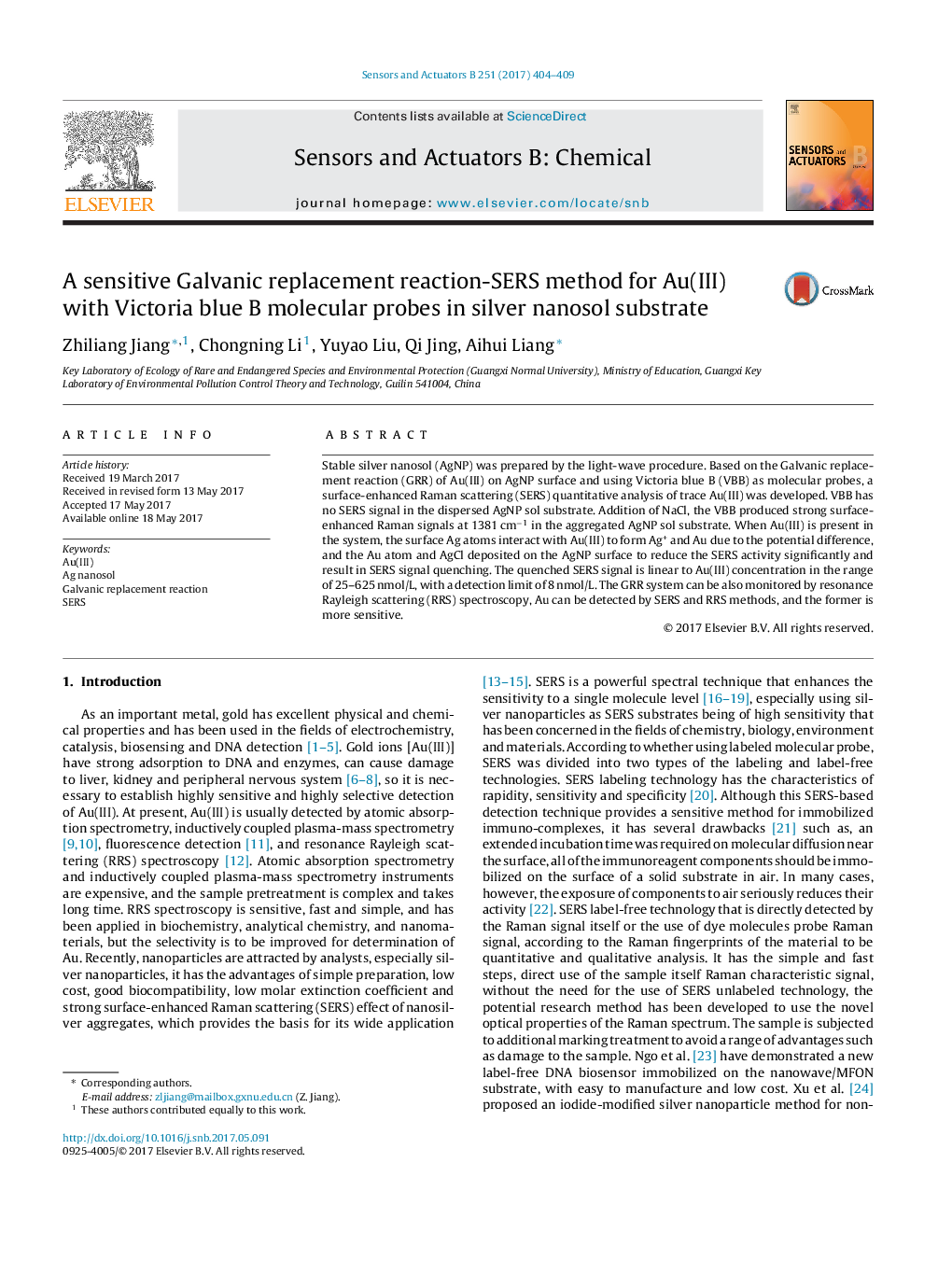| Article ID | Journal | Published Year | Pages | File Type |
|---|---|---|---|---|
| 5008884 | Sensors and Actuators B: Chemical | 2017 | 6 Pages |
Abstract
Stable silver nanosol (AgNP) was prepared by the light-wave procedure. Based on the Galvanic replacement reaction (GRR) of Au(III) on AgNP surface and using Victoria blue B (VBB) as molecular probes, a surface-enhanced Raman scattering (SERS) quantitative analysis of trace Au(III) was developed. VBB has no SERS signal in the dispersed AgNP sol substrate. Addition of NaCl, the VBB produced strong surface-enhanced Raman signals at 1381Â cmâ1 in the aggregated AgNP sol substrate. When Au(III) is present in the system, the surface Ag atoms interact with Au(III) to form Ag+ and Au due to the potential difference, and the Au atom and AgCl deposited on the AgNP surface to reduce the SERS activity significantly and result in SERS signal quenching. The quenched SERS signal is linear to Au(III) concentration in the range of 25-625Â nmol/L, with a detection limit of 8Â nmol/L. The GRR system can be also monitored by resonance Rayleigh scattering (RRS) spectroscopy, Au can be detected by SERS and RRS methods, and the former is more sensitive.
Related Topics
Physical Sciences and Engineering
Chemistry
Analytical Chemistry
Authors
Zhiliang Jiang, Chongning Li, Yuyao Liu, Qi Jing, Aihui Liang,
